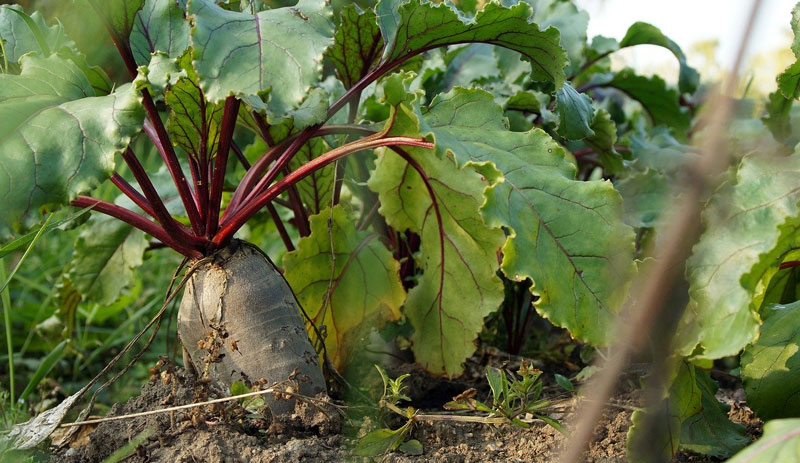
Vibrant purple, striped pink, golden yellow, surprisingly white, perfectly round, cylindrical, kind of heart shaped. Beets in all colors and shapes are grown across the land.
That is, they’re grown where farmers have them figured out. These root vegetables are prizes in the three-season garden, providing both roots and greens in all climates.
How to Grow Beets
The challenge with beets is getting the soil right. This is the challenge with most crops, right? Beets, though, are especially demanding in their need for the proper pH (6.0 to 6.8), high phosphorus and potassium content for root development, and friable soil.
Root vegetables like beetroot should be direct seeded rather than transplanted. You want to disturb them as little as possible once they’ve gotten started. They’ll germinate in soil temperatures as low as 40 degrees Fahrenheit. So get them in the ground as soon as possible in the spring.
Understand Beet Seeds
Each beet seed is a funky, multi-sided shape. They’re actually corms, which are clusters of seeds. Each corm will produce multiple beets, so thinning to 1 to 3 inches after emergence is vital.
Keep beets watered for the best root development.
Choose your varieties based on whether you want to eat baby beets or full-sized beets, as well as the color and the shape you’re after, plus your level of excitement about eating the greens. (Personally, I get very excited about the greens.)
Check out this recipe for a beet-heavy Russian borscht soup.
Keep Beets Healthy
With the right pH and nutrient balance in the soil, your beets will be off to a good start until the insects find them.
Beet greens, their vibrant green and burgundy beauty waving like a flag, attract all manner of aphids, flea beetles, leafhoppers and more. The roots will thrive surprisingly well while their leaves are under attack. But this is obviously not ideal.
Do your part to keep the insects at bay for overall plant health, to keep your greens in edible condition and to prevent the insects from spreading viruses through the garden.

How to Harvest Beets
If in the past five years you’ve eaten at any restaurant that heavily features vegetables, you probably know about the baby-beet craze. Beets are tasty when harvested at just 1 inch in diameter, all the way up to 3 inches or more. They rarely get woody, unlike some root vegetables that are left to grow too long.
Mature beets take just about two months from planting to harvest—more if you want really big beets.
Separate roots and greens before storing them in the fridge, otherwise the roots will transpire their moisture out of the attached leaves. Eat the greens soon, but the roots will keep for months in cool, dry storage.
How to Eat Beets
This humble crop offers a multitude of tasty eating options.
To start, we have baby beets, which are glorious when roasted whole and served alongside goat cheese and pecans on a bed of spinach, topped with a citrus vinaigrette. High in natural sugar, beets get sweeter with roasting.
Fully mature beets are revered for their role in their borscht soup and are pretty great when shredded raw and tossed with shredded carrots, kohlrabi and a bit of ginger. Fermented or pickled, beets are a tangy accompaniment to any dish, and juiced, beets make a nice appearance at breakfast.
Learn how to make “great-grandma’s pickled beets.”
Part of what I love about cooking with beets is the shocking-pink color that can result. Take beet hummus—it’s just like regular homemade hummus but with an added beet, turning the final result magenta.
I once made beet and millet burgers that could have passed as hamburgers cooked medium-rare, no beef in sight.
My best friend is largely anti-beet, but she can be persuaded to eat golden beets. She says they taste less “beety,” which I say defeats some of the purpose. But if that’s what you need to take advantage of beets’ nutritional value, I can’t judge. Beet roots are a good source of vitamin C, folate and fiber.
And don’t forget about those greens, high in Vitamin A. They can be eaten just as you would any greens. I love them sautéed with a bit of lemon and served alongside their chopped, steamed roots.
If you’re after a versatile three-season, double-duty crop, do the work to figure out how to make beets work in your garden.




